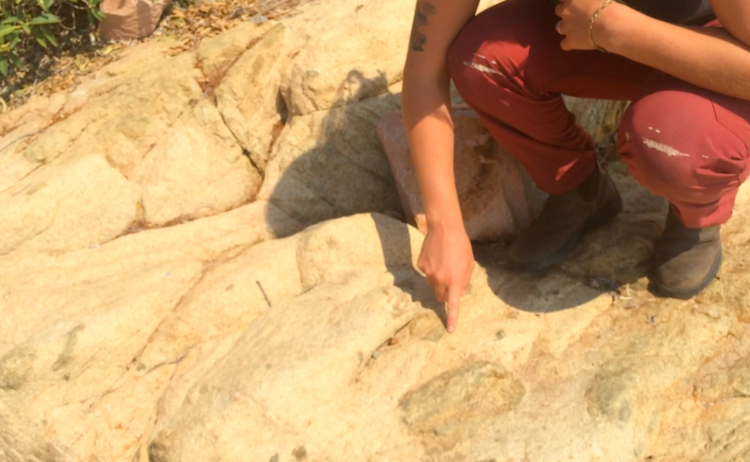
Xenoliths in Granite
Have a look around this granite outcrop and see if you can find any xenoliths.
Xenoliths are bits of rock that have been caught up within another rock type, so if you've got a keen eye what you might find are small fragments of rocks scattered about that look different to the surrounding material.
If you're having trouble finding some, come down towards the front of the outcrop. Carefully step down off the path that goes around the rock pool, and take a look at the outcrop from that angle.
So here's another question: which do you think is older, the xenolith or the surrounding material?
The answer is, the xenolith!
Xenoliths occur as magma rises up from within the Earth, and tears off bits of the pre-existing, older surrounding solid rock as it goes. Those rock fragments get caught in the magma and rise up with it, and then when the magma cools to form igneous rocks, those xenoliths are preserved.
Like dykes, xenoliths are fairly common and can come in all different shapes, sizes and forms.
So see how many you can find here, and keep an eye out for anymore that you may see throughout the rest of the field trip.
-
Castle Hill
-
Dolerite Dyke Intruding into Granite Rock Wall
-
Faulting in Granite
-
Xenoliths in Granite
-
Pallarenda Beach
-
Pumice and Coal on the beach
-
Weathered rocks
-
Lava Flows
-
Volcanic tuff
-
Preferentially weathered intrusion
-
Coarse volcanic tuff